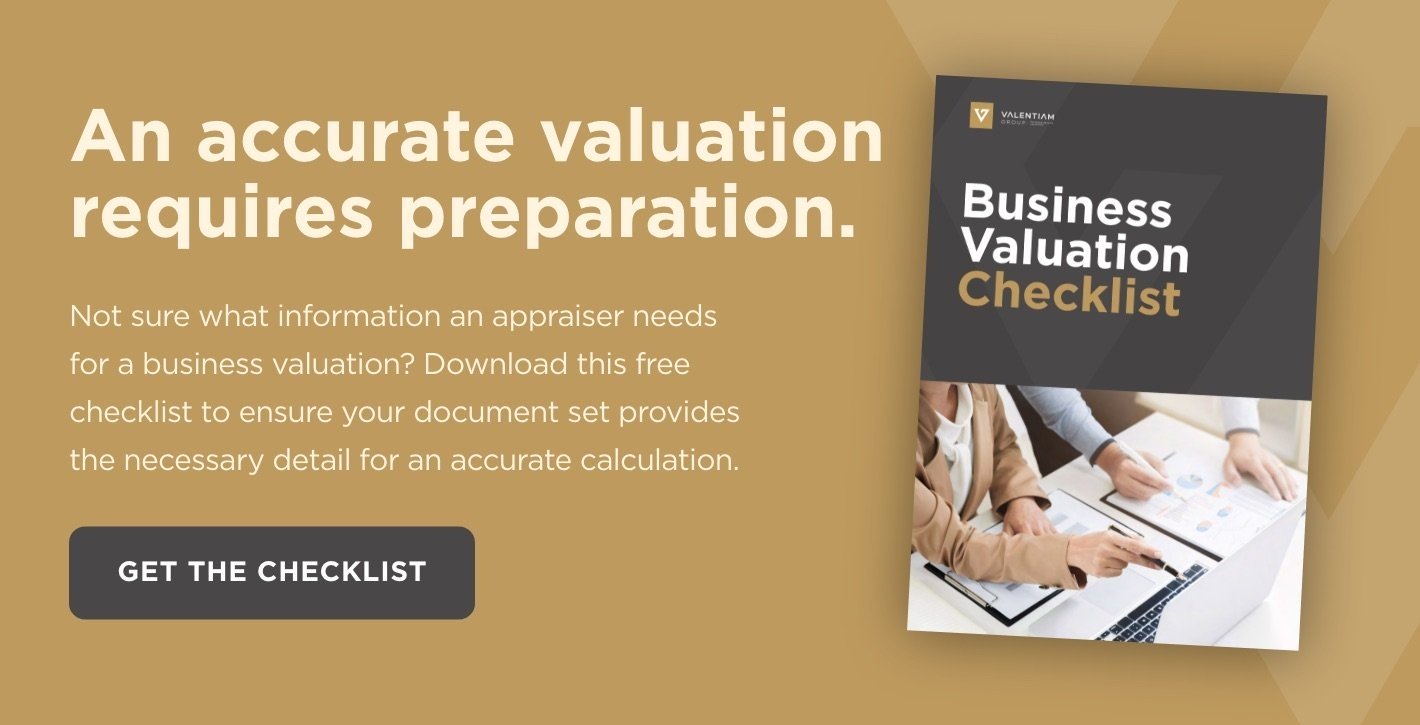Pre-Money Vs. Post-Money Valuation: What's The Difference?
Posted by Valentiam Group on September 4, 2020

In any venture investment, pre-money vs. post-money valuation is likely to be the focus of consideration and discussion. Pre- vs. post-money valuation may be drafted into the term sheet or included in capitalization tables and calculations. For this reason, it’s important to understand the meanings of the terms pre-money and post-money in the context of valuation, because they will have an impact on financing.
In this article, we will define the terms pre-money and post-money, and examine how to calculate pre-money valuation. We’ll also include a pre-money/post-money valuation example.
Pre-Money Vs. Post-Money Valuation
Pre-money and post-money valuation are terms used in an investment transaction context.
What is pre-money valuation?
Pre-money valuation is the value of the Subject Company immediately before the investment transaction takes place. In terms of how to calculate the pre-money valuation of the Subject Company, this value is likely to be negotiated to a figure that the Subject Company and the investor have both agreed to accept as a proxy for the company’s enterprise value at that moment in time.
The reason the Subject Company’s value may be negotiated rather than calculated through the market, income, or cash methods of valuation has to do with the nature of venture investment itself.
Venture capital investment is commonly used to fund startup companies. The Subject Company may be a startup which has yet to generate any revenue; in this scenario, there are no financial metrics to use for determining value. This is common in technology start-ups; a new application, platform, or technology may show great promise but still be in the development phase. Venture investment is pursued to provide the capital needed to carry the company over the finish line so it can launch the product or service it is developing. The future market success for the product or service is a complete unknown at the time of investment, so the investment and the value of the Subject Company itself are both highly speculative.
In this situation, the investor will likely consider comparable companies that already have an established track record to make assumptions about the future value of the Subject Company, examining the EBITDA multiples and stock prices of similar businesses—and take into consideration the length of time required for similar businesses to reach their current values. These assumptions will determine both the amount the investor is willing to risk and the investor’s estimation of the Subject Company’s pre-money value.
The negotiated value of the Subject Company will determine the per-share price of the stock the investor will be purchasing with the investment, and ultimately, the portion of the Subject Company the investor will own.
For example, VCGiant agrees to invest $10 million into ShoutyFace, a startup social media platform, based on a $40 million pre-money valuation. ShoutyFace and VCGiant have agreed that ShoutyFace is worth $40 million immediately prior to VCGiant’s investment. With the $10 million investment, VCGiant will own 20% of ShoutyFace, based upon ShoutyFace’s post-money value.
What is post-money valuation?
The Subject Company’s post-money value is simply the pre-money value plus the capital received in the investment transaction. In the example above, ShoutyFace had a pre-money value of $40 million just prior to VCGiant’s investment of $10 million. As soon as the transaction is completed, ShoutyFace’s post-money value is $50 million. VCGiant’s investment of $10 million represents 20% of ShoutyFace’s post-money value.
Download our free Business Valuation Checklist to learn about the information needed to calculate an accurate, comprehensive valuation of your business assets.
Impact Of Pre-Money Valuation On Financing
As noted above, an investor will consider the performance of similar companies and the time horizon for return on investment when determining both how much to invest and the pre-money value of the Subject Company.
Pre-money value will also determine the size of the investor’s ownership stake in the Subject Company, and the percentage of the company existing stockholders will retain. In return for the investor’s capital, the Subject Company will give the investor stock shares. The price per share (PPS) that the investor pays for the stock is determined with this formula:
PPS = Pre-money Value/Fully Diluted Capitalization
The fully diluted capitalization includes all outstanding shares, plus granted stock options, warrants, shares reserved for any employee stock option plans and any increase in share reserves for the plans dictated by the term sheet, and all shares issued in consideration for convertible notes and SAFEs (simple agreements for future equity).
For example, VCGiant is going to invest $10 million into ShoutyFace based on an $40 million pre-money valuation. The term sheet dictates that the fully diluted capitalization includes all outstanding stock, all granted options and warrants, shares currently reserved under an employee option plan, an increase in the shares reserved for the option plan, and all shares issued in consideration for convertible notes and SAFEs. ShoutyFace’s fully diluted capitalization is as follows:
|
Stock |
20,000,000 shares |
|
Options |
6,800,000 shares |
|
Warrants |
700,000 shares |
|
Plan shares (current) |
5,000,000 shares |
|
Plan shares (increase) |
5,000,000 shares |
|
Note & SAFE shares |
5,000,000 shares |
|
Total |
42,500,000 shares |
In this example, the PPS that VCGiant will pay for its stock is:
$40 million/42,500,000 shares = $0.9412.
VCGiant’s investment of $10 million will buy almost 10,625,000 shares, giving VCGiant ownership of roughly 25% of ShoutyFace, pre-money.
Pre-money value and PPS are directly proportional—as one goes up or down, so does the other. The higher the pre-money value, the more an investor will pay per share, and the smaller the investor’s ownership stake will be due to the acquisition of fewer shares.
If, for example, the negotiated pre-money value of ShoutyFace is agreed to be $35 million rather than $40 million, its PPS will be $0.8235. VCGiant’s investment of $10 million will buy more than 12,143,000 shares, and its ownership share of ShoutyFace will be closer to 29%, pre-money.
Pre-money Vs. Post-Money Valuation: Which should be used?
Pre-money and post-money value have a mathematical relationship, so either valuation can be used. But in practice, pre-money value is more often used on term sheets. Using only the pre-money metric will avoid confusion that can arise when both pre-money and post-money values are included.
The terms pre-money value and post-money value are a fixture of venture investment. Though the essential difference between pre-money and post-money value is the timing of the valuation, these valuations determine the share of the company the investor will acquire for a specified capital investment and the percentage of the company retained by existing stockholders. Disregarding for a moment fully diluted capitalization, if in our example we calculate VCGiant’s investment in terms of ShoutyFace’s pre-money value of $40 million, VCGiant’s $10 million represents 25% of the pre-money value. Calculating from a post-money valuation of $50 million, VCGiant’s $10 million investment represents 20% of ShoutyFace’s value. A difference of five percent in the ownership stake is significant and can mean the difference between a good investment or a poor one. Therefore, it’s important for all parties to keep the distinction between the two terms in mind when considering how they support any given investment or estimation of value.
Need help determining the value of your business?
Valentiam has helped companies in a variety of industries attain accurate enterprise and asset valuations. We have extensive experience in the application of all valuation methods for a broad range of businesses and situations. Our valuation and transfer pricing specialists have worked with some of the largest companies in the world.
Contact us to see how we can help your company with your valuation and transfer pricing needs.
Topics: Business valuation
Related Posts
EBITDA Multiples By Industry: An Analysis
EBITDA multiples by industry indicate growth, profitability, and stability of profits in various sectors—and are a quick and easy way to estimate value.
Valuation Methods: A Guide
Different types of business valuation methods are suited to specific needs. Here are the three primary types of valuation techniques and when they should be used.


